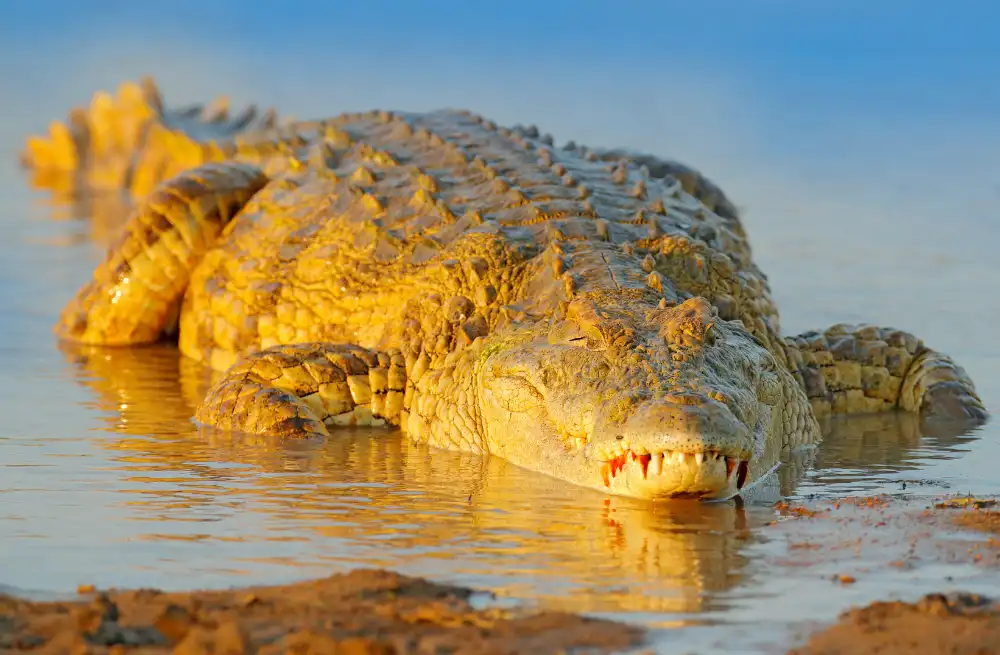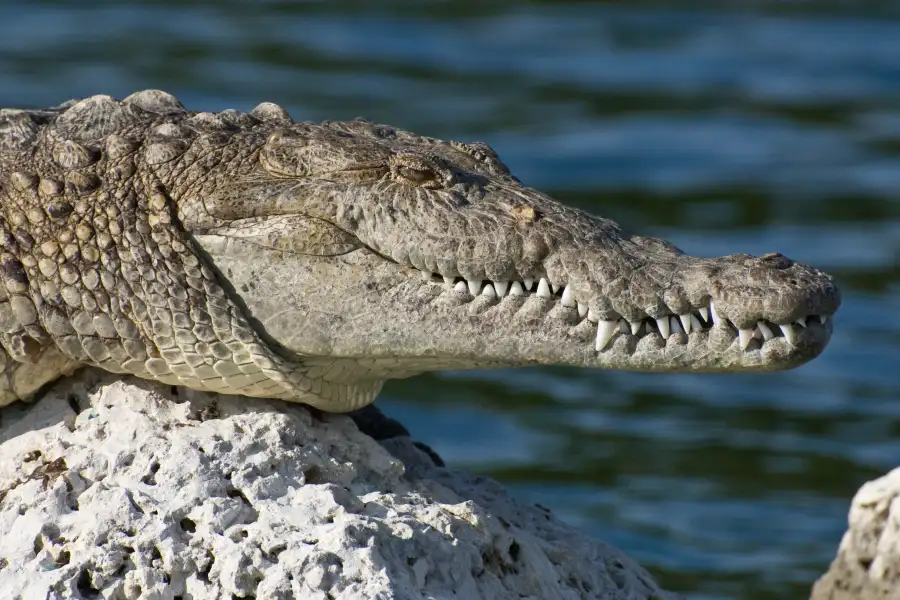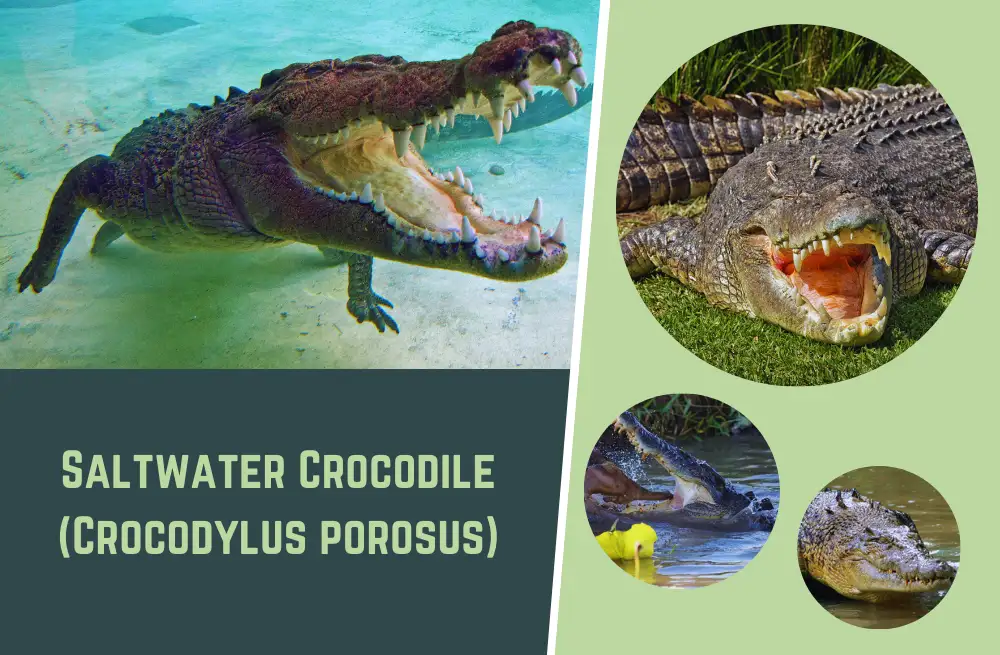How Long do Crocodiles Live? (Crocodile Lifespan)
Crocodiles are fascinating creatures that have captured the imagination of people for centuries. They are members of the crocodilian family and have a unique life cycle that spans several decades. In this post, we will explore the lifespan of crocodiles and what factors can affect their longevity.
The lifespan of crocodiles varies depending on the species, with some living up to 70 years or more. American crocodiles, for example, can live up to 50-60 years in the wild, with adult crocodiles having a longer lifespan than young ones. This means that old crocodiles can be found in different parts of the world.
Crocodiles reach sexual maturity at different times depending on their species, with some taking up to 10 years to reach adulthood. Once they reach sexual maturity, they can reproduce and continue their life cycle by laying eggs and hatching hatchlings.
Studies have shown that factors such as growth rate, diet, and environmental conditions can affect the lifespan of crocodiles.
For instance, if a young American crocodile has a healthy diet and lives in an environment conducive to its growth rate, it is likely to live longer than one that does not receive proper care.
Average Lifespan of a Crocodile and Beyond
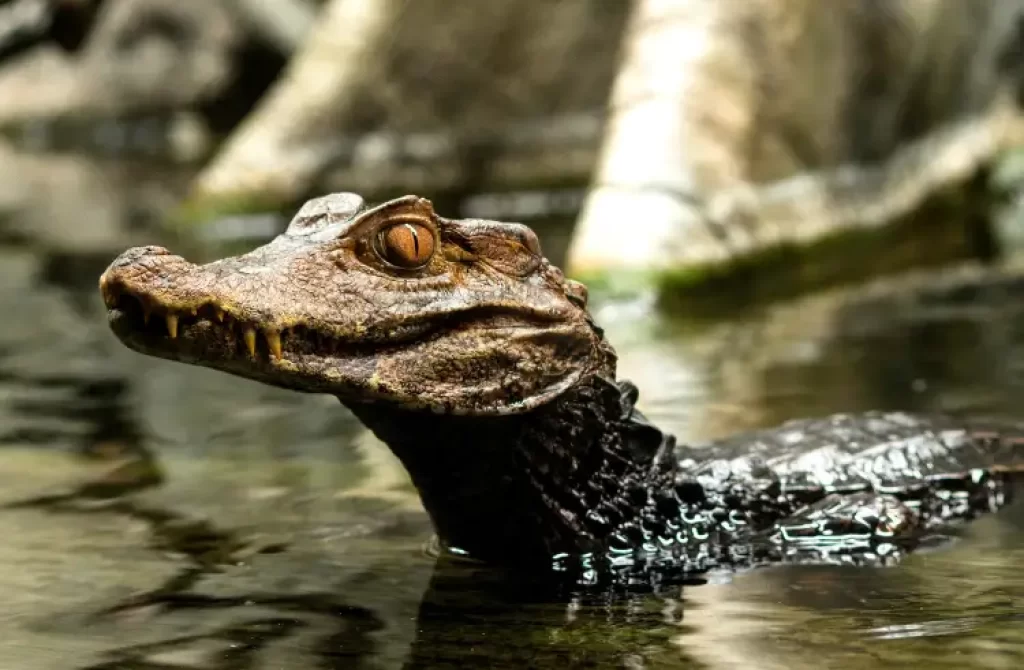
Factors Affecting the Average Lifespan of a Crocodile
Crocodiles are fascinating creatures that have been around for millions of years. They are known for their long lifespan, which varies depending on the species. Factors such as habitat, diet, and genetics can affect the average lifespan of a crocodile.
The average lifespan of a crocodile varies between 30 to 70 years in the wild. However, some species have been known to live beyond 100 years in captivity. One such example is Mr. Freshie, an Australian saltwater crocodile who lived up to 140 years old in captivity.
Habitat plays a crucial role in determining the lifespan of a crocodile. Crocodiles living in pristine habitats with minimal human disturbance tend to live longer than those living in degraded habitats with high levels of pollution and human encroachment.
For instance, Nile crocodiles living in protected areas of East Africa have an average lifespan of around 45 years compared to those living near urban centers that only live up to around 25 years.
Diet is another factor that affects the lifespan of a crocodile. Crocodiles are opportunistic feeders and will eat anything from fish and birds to mammals and other reptiles. A balanced diet rich in protein and essential nutrients contributes significantly to their longevity.
Genetics also play a role in determining how long a crocodile lives. Some species have genes that make them more resilient than others, allowing them to survive harsh environmental conditions better.
Slow Growth Rate Contributes to Long Lifespan
Crocodiles have a slow growth rate and reach maturity at around ten to fifteen years old, contributing significantly to their long lifespan.
This slow growth rate means they take longer to reach sexual maturity, which reduces their reproductive output but increases their chances of survival.
Unlike most animals that grow rapidly during their early stages before slowing down later on, crocodiles grow slowly throughout their lives. This slow growth rate means that they are less susceptible to age-related illnesses, allowing them to live longer.
Threats to the Longevity of Crocodiles
Despite their long lifespan, crocodiles face several threats that can significantly reduce their chances of survival. Habitat loss is one such threat, with human encroachment leading to the destruction of wetlands and other habitats crucial for crocodile survival.
Hunting is another significant threat facing crocodiles worldwide. In many parts of the world, crocodiles are hunted for their skin, which is highly valued in the fashion industry.
Overhunting has led to a decline in crocodile populations worldwide, reducing their chances of living long enough to reach maturity and reproduce.
Climate change is also affecting the longevity of crocodiles. Rising temperatures and changing weather patterns are altering their habitats, making it difficult for them to find food and water.
This disruption in their natural environment can lead to stress and illness, reducing their chances of living long enough to reach maturity.
Factors That Impact the Lifespan of Crocodiles
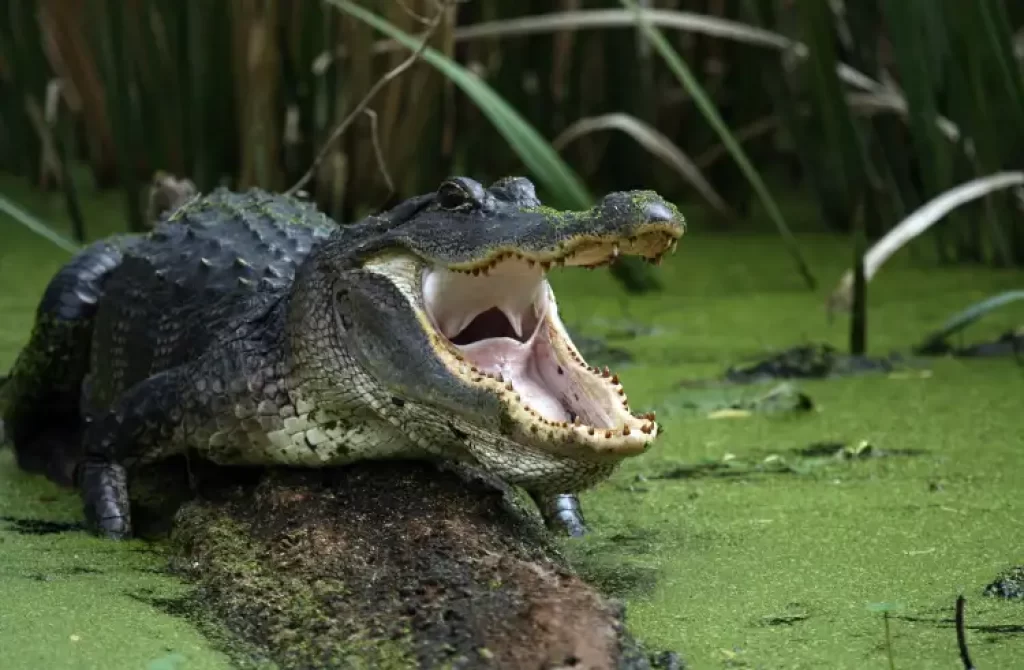
Species
Crocodiles are a diverse group of reptiles that have been around for millions of years. There are 23 species of crocodiles, and each has its unique characteristics, including lifespan.
Different species of crocodiles have varying lifespans. For instance, the American crocodile can live up to 70 years, while the saltwater crocodile can live up to 100 years.
The Nile crocodile is another species that can live for a long time. They can grow up to 20 feet long and weigh over 1,000 pounds. These massive reptiles have a lifespan of up to 80 years in the wild.
Habitat
The environment where crocodiles live can impact their lifespan significantly. Those living in polluted or disturbed habitats may have a shorter lifespan compared to those living in pristine habitats. Crocodiles require clean water and healthy ecosystems to thrive.
For example, the Siamese crocodile is critically endangered due to habitat loss and degradation caused by human activities such as logging and dam construction. This species has an average lifespan of around 70 years but is at risk of extinction due to habitat destruction.
Diet
Crocodiles that have access to a diverse range of prey tend to live longer than those with limited food options. A balanced diet helps them maintain good health and avoid diseases.
For instance, the Australian freshwater crocodile feeds on fish, crustaceans, insects, and small mammals like rodents. They also consume carrion when available. This varied diet ensures they get all the necessary nutrients required for healthy growth and development.
Genetics
Just like humans, genetics play a role in the lifespan of crocodiles. Some individuals may be predisposed to certain diseases or conditions that can shorten their lifespan.
Inbreeding depression is one genetic factor that affects some populations of captive-bred crocodilians worldwide.
This phenomenon occurs when closely related individuals mate, leading to a decrease in genetic diversity and an increase in the expression of harmful recessive traits. This can result in reduced fitness, lower reproductive success, and shorter lifespans.
Human activities
Human activities such as hunting, poaching, habitat destruction, and pollution can all negatively impact the lifespan of crocodiles. Conservation efforts are crucial to ensure their survival and longevity.
For instance, the Chinese alligator is one of the most endangered crocodile species globally. Habitat loss due to human activities such as dam construction and agriculture has led to a significant decline in their population.
This species has an average lifespan of around 50 years but is at risk of extinction due to habitat destruction.
Size, Swimming Ability, and Diet of Saltwater Crocodiles
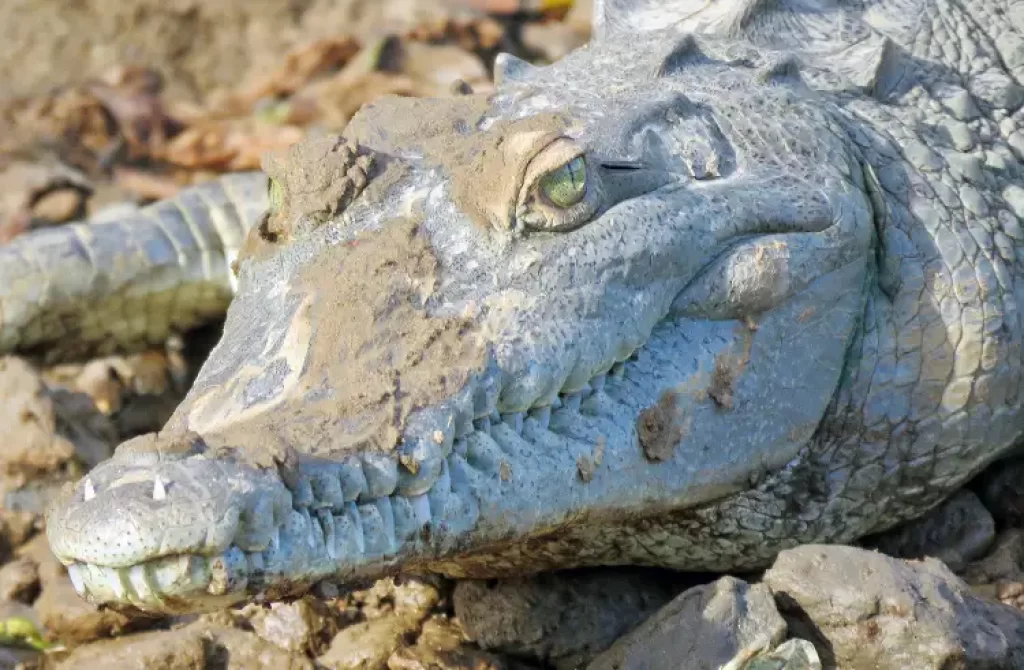
Saltwater crocodiles are the largest reptiles on earth, with males reaching up to 6 meters in length and weighing over 1,000 kg. Their size is impressive and makes them one of the most fascinating creatures in the world.
These apex predators have a diverse diet that includes fish, birds, mammals, and even other crocodiles. Their powerful jaws and sharp teeth allow them to take down prey much larger than themselves.
Size of Saltwater Crocodiles
Saltwater crocodiles are massive creatures that can grow up to 23 feet long. They are found in many countries including Australia, India, Sri Lanka, Malaysia, Indonesia, and Papua New Guinea.
The average weight of a large adult male saltwater crocodile is around 500-1000 kg while females weigh around 100-300 kg.
The size of saltwater crocodiles varies depending on their habitat and food availability. In areas where there is an abundance of food such as fish or small mammals like rats or rabbits they tend to grow larger than those living in areas with less food available.
Swimming Ability of Saltwater Crocodiles
Despite their size and weight, saltwater crocodiles are excellent swimmers capable of covering long distances both in salt water and freshwater environments.
They can swim at speeds up to 15 mph (24 km/h) for short distances but usually swim at slower speeds when hunting or patrolling their territory.
Saltwater crocodiles have several adaptations that make them great swimmers such as webbed feet which help them move through water more efficiently by increasing surface area for propulsion. Their muscular tails also aid in swimming by providing propulsion while swimming underwater.
Diet of Saltwater Crocodiles
As apex predators, saltwater crocodiles have a diverse diet that includes fish, birds, mammals like wallabies or wild pigs, and even other crocodiles. They are opportunistic hunters and will eat whatever prey is available in their habitat.
Saltwater crocodiles have powerful jaws that can exert a force of over 3,000 pounds per square inch (psi). Their sharp teeth are designed to grip and hold onto prey while they drag them underwater to drown or until they become weak enough for the crocodile to overpower them.
The Biggest Saltwater Crocodile Ever Found and Other Size Facts
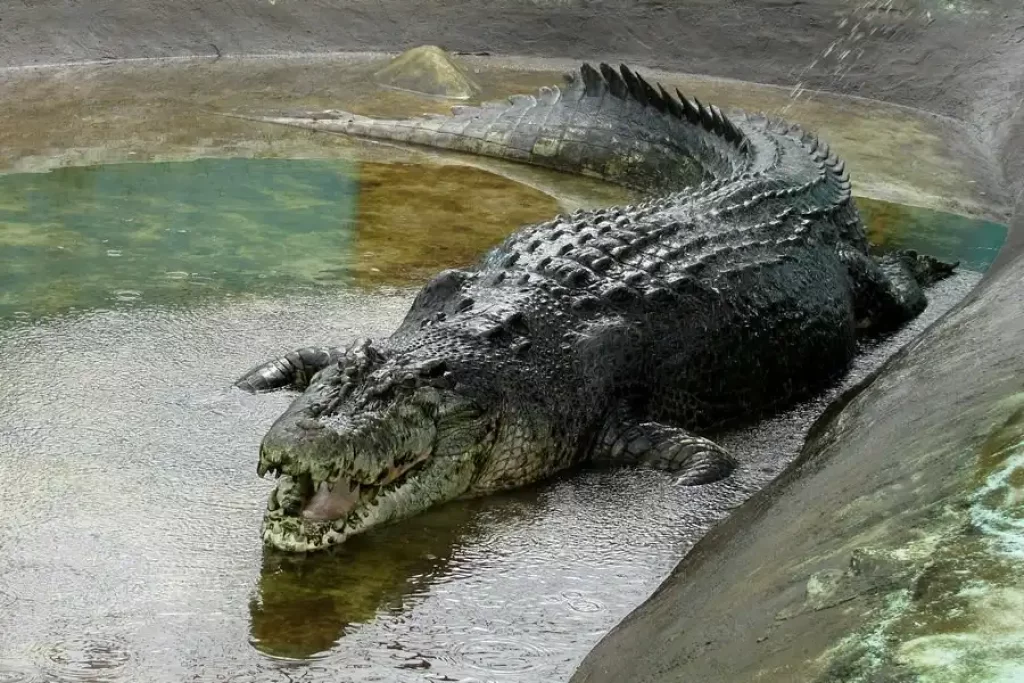
Crocodiles are fascinating creatures that have been around for millions of years. They are known for their size, strength, and ferocity. Among the different species of crocodiles, the saltwater crocodile is the largest living reptile in the world. In this section, we will discuss some interesting facts about the size of crocodiles.
The Largest Crocodile Ever Found
The biggest crocodile ever found was a saltwater crocodile measuring 23 feet long and weighing over 2,000 pounds. This massive reptile was captured in the Philippines in 2011 and was named “Lolong.” It took more than 100 people to capture him, as he was too large to be caught with a single trap.
Saltwater Crocodiles – The Largest Living Reptiles
Saltwater crocodiles are found throughout Southeast Asia and Australia. They are known for their enormous size and strength. Males can reach an average length of 17 feet while females reach an average length of 10 feet. These reptiles can weigh up to a ton or more.
Saltwater Vs American Crocodile
While saltwater crocodiles are the largest living reptiles in the world, there are other impressive species as well. The large American crocodile is one such example. Males can reach up to 18 feet in length and weigh up to 2,000 pounds.
Biggest Specimens Found In Costa Rica And Zulu Natal
Although saltwater crocodiles are found throughout Southeast Asia and Australia, some of the biggest specimens have been found in other parts of the world as well.
For instance, Costa Rica has become famous for its huge saltwater crocodiles that live along its Pacific coast. These giant reptiles can grow up to 18 feet long.
Another place where massive saltwater crocodiles have been found is Zulu Natal, a province in South Africa. It is the only place where “Big Daddy,” a massive saltwater crocodile measuring over 23 feet long, was spotted.
Size Matters
The size of crocodiles has always fascinated people. These reptiles have been known to grow to enormous sizes and can be found in various parts of the world. The biggest crocodile ever found was a saltwater crocodile measuring 23 feet long and weighing over 2,000 pounds.
Saltwater crocodiles are the largest living reptiles in the world, with males reaching an average length of 17 feet and females reaching an average length of 10 feet. The large American crocodile is also an impressive species, with males reaching up to 18 feet in length and weighing up to 2,000 pounds.
While saltwater crocodiles are found throughout Southeast Asia and Australia, some of the biggest specimens have been found in other parts of the world as well.
Costa Rica has become famous for its huge saltwater crocodiles that live along its Pacific coast. These giant reptiles can grow up to 18 feet long.
Can a Crocodile Survive Without Food?
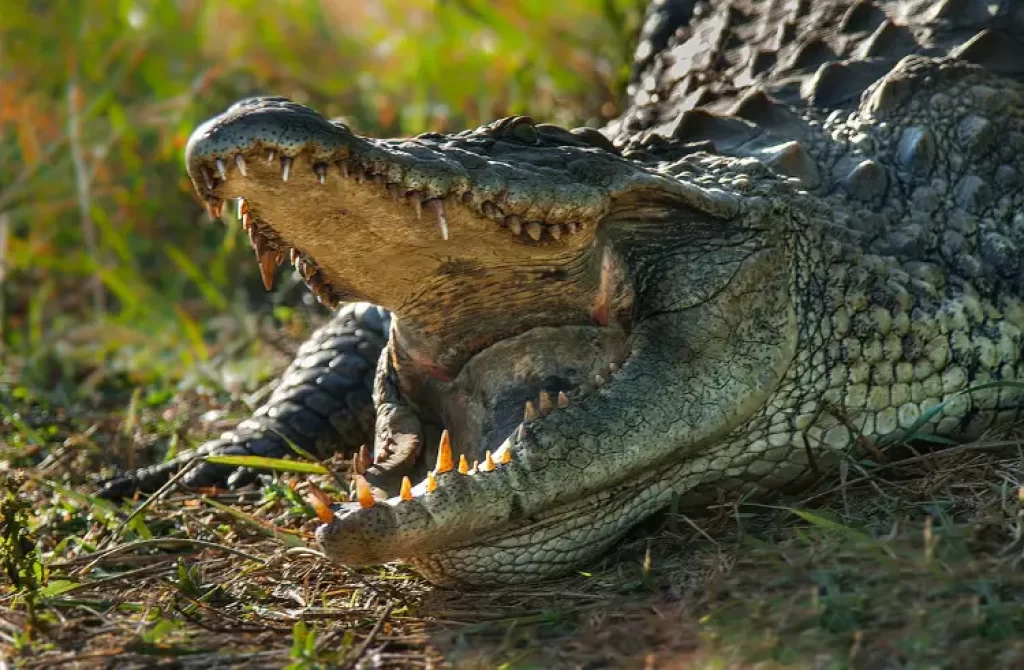
Crocodiles are known for their impressive ability to survive without food for extended periods. This is due to their slow metabolism, which allows them to conserve energy and nutrients. In fact, crocodiles can go for months without eating, depending on the species and environmental conditions.
Diet of Crocodiles
Crocodiles have a diverse diet that includes fish, birds, mammals, and even other reptiles. They are opportunistic hunters and will consume any prey that they can catch.
Some species of crocodiles have been observed hunting in groups to take down larger prey such as wildebeest or buffalo.
Storing Food in Stomachs
One reason why crocodiles can survive for long periods without food is because they store it in their stomachs.
Unlike humans who digest food quickly, crocodiles’ digestive systems are designed to extract as many nutrients as possible from their meals.
The stomachs of some species have been found to contain rocks that help grind up tough prey such as turtles or crabs.
Scavenging and Cannibalism
During times of food scarcity, crocodiles may resort to scavenging or even cannibalism to survive. They will eat anything from dead fish washed up on shorelines to other animals killed by natural disasters like floods or droughts. In some cases, adult crocodiles have been known to eat younger members of their own species.
Adapting To Environment
Crocodilian biology has evolved over millions of years to adapt them perfectly into the environment where they live today. Their unique physiology makes them highly resistant against starvation; however, this does not mean that they do not need food at all.
Debunking Myths About Crocodile Speed: Can Humans Outrun Them?
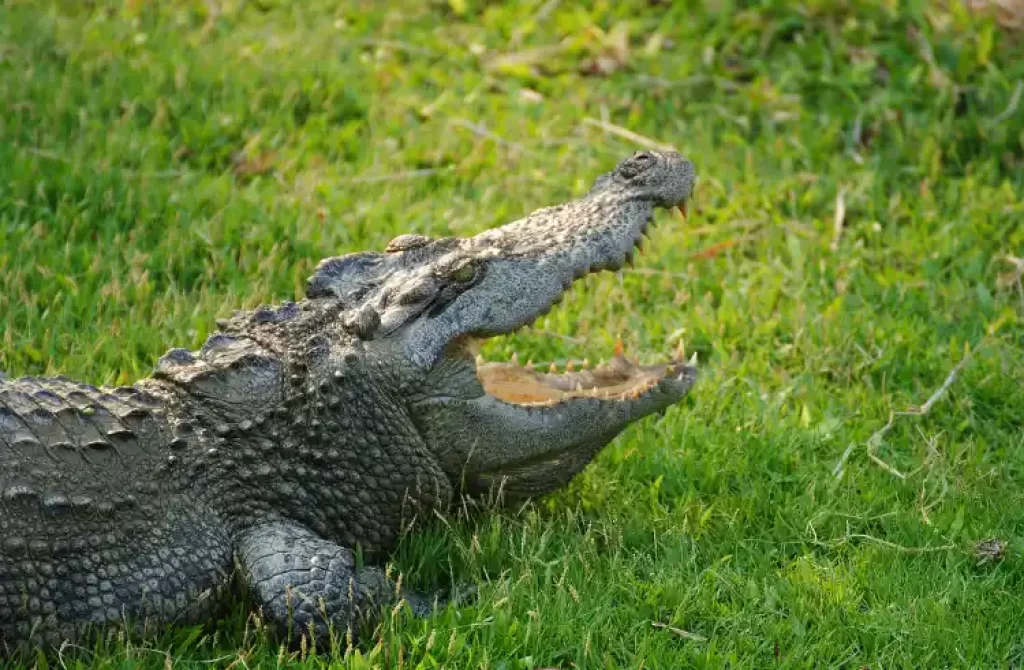
Myth: Crocodiles can run as fast as humans on land.
Crocodiles are often portrayed as fierce and agile predators that can outrun any human. However, this is far from the truth. In reality, crocodiles have a lower body temperature than humans, which affects their speed and agility on land.
Fact: Crocodiles have a lower body temperature than humans, which affects their speed and agility on land.
Crocodiles are cold-blooded animals, meaning their body temperature is regulated by the environment around them. This makes them slower and less agile on land compared to warm-blooded humans who can regulate their body temperature internally.
Why crocodiles are slower on land?
Crocodile’s muscles require warmth to function properly. When they move out of water onto the ground, they lose heat rapidly because of the difference in temperature between air and water. Due to this loss of heat, their muscles become stiff and slow down significantly.
Additionally, crocodiles are built for swimming rather than running. Their short legs with webbed feet make it difficult for them to move efficiently on land.
They also have a heavy tail that drags behind them when they walk or run, making it harder for them to maintain balance and speed.
Are you interested in learning more about crocodiles and their amazing swimming abilities? If so, we’d love for you to check out our in-depth article on the subject!
Prey and Predators of Crocodiles
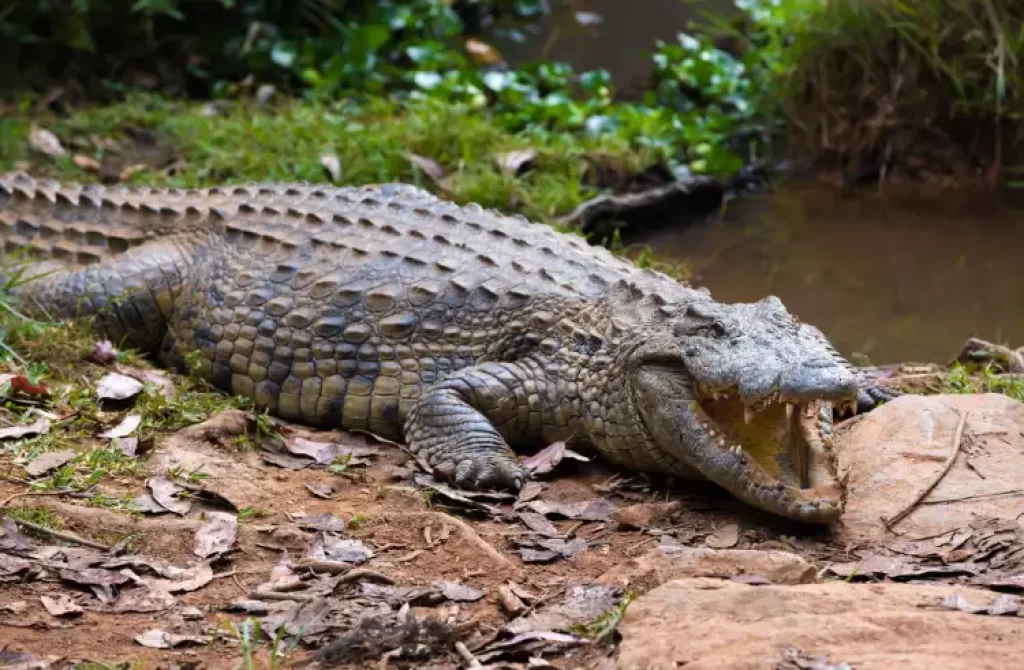
Apex predators are those that sit at the top of the food chain, and crocodiles are no exception. These reptiles are some of the most efficient hunters in the animal kingdom, with their powerful jaws and sharp teeth allowing them to take down prey much larger than themselves. In this section, we will discuss the prey and predators of crocodiles.
Adult crocodiles can prey on a wide range of animals such as fish, birds, mammals, and other reptiles.
They have been known to hunt everything from small rodents to large ungulates like deer and buffalo.
Nile crocodiles, which are one of the largest crocodile species, can even take down large prey like wildebeest and zebras.
Freshwater crocodiles are known to feed primarily on fish. Their narrow snouts make it easier for them to catch their slippery prey underwater. American crocodiles prefer to hunt in shallow waters for small mammals and birds.
Crocodile species vary in their hunting techniques depending on their habitat and available food sources. For example, saltwater crocodiles (Crocodylus porosus) have been observed using a technique called “death roll” where they spin rapidly while holding onto their prey until it is dismembered or drowned.
Crocodilians have few natural predators aside from humans but may occasionally compete with other predators such as spectacled caimans for food.
Spectacled caimans are smaller than most crocodile species but can still pose a threat to young or injured individuals.
In addition to predation by other animals, human activities such as hunting and habitat destruction also threaten many crocodile populations worldwide.
This is particularly true for species like the Chinese alligator which is critically endangered due to habitat loss and poaching.
Despite these threats, many countries have implemented conservation measures aimed at protecting these apex predators. For example, Australia has strict laws in place protecting saltwater crocodiles and their habitats. These measures have resulted in a rebound of crocodile populations in some areas.
Interspecies Predatory Relations and Relationship with Humans
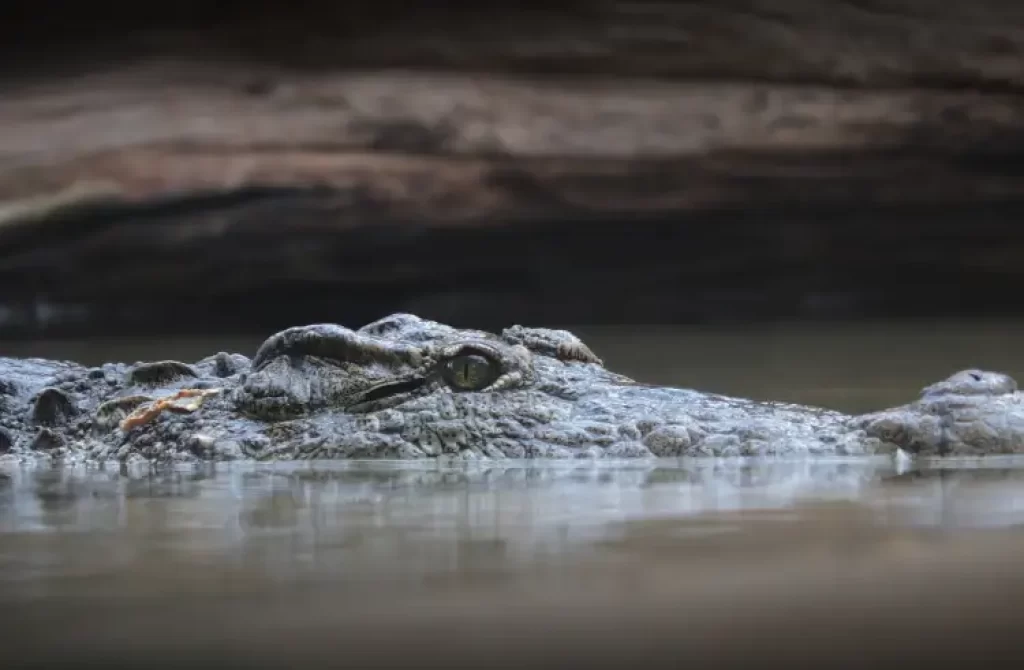
Crocodiles are apex predators and have few natural enemies, but they can be threatened by humans who hunt them for their skin and meat.
In some areas, crocodiles have been known to prey on humans who venture too close to their habitat, leading to conflicts between the two species.
These conflicts often arise in regions where human populations are expanding into crocodile habitats, such as in South America.
Different species of crocodiles have distinct appearances and behaviors. For example, the American crocodile has a longer snout than other species and is less aggressive towards humans. On the other hand, the saltwater crocodile is one of the most aggressive species towards both humans and other animals.
Crocodiles play an important role in their ecosystem by controlling the population of small mammals and other animals in their range. They also help maintain healthy water systems by digging burrows that serve as homes for fish during dry seasons.
Captivity can have negative effects on crocodiles because they require a large habitat and specific conditions to thrive. When kept in captivity, they may develop health problems due to lack of exercise or poor nutrition. Additionally, captive breeding programs may lead to genetic problems if not carefully managed.
Conservation efforts are crucial to protect these animals and their habitats. Many organizations work to monitor crocodile populations and educate communities about how to safely coexist with these creatures.
Some conservation efforts include habitat restoration projects or captive breeding programs aimed at reintroducing endangered species into the wild.
Crocodiles have been around for hundreds of millions of years and are an important part of our planet’s history and biodiversity.
Their unique cells make them fascinating creatures to study; for example, scientists have discovered that crocodile cells contain more mitochondria than any other animal cell type studied so far.
Furthermore, researchers have found that crocodile eyes contain a special layer called tapetum lucidum which allows them to see clearly even in low light conditions. This adaptation makes them excellent hunters and allows them to see prey even in murky water.
Can crocodiles live up to 150 years?
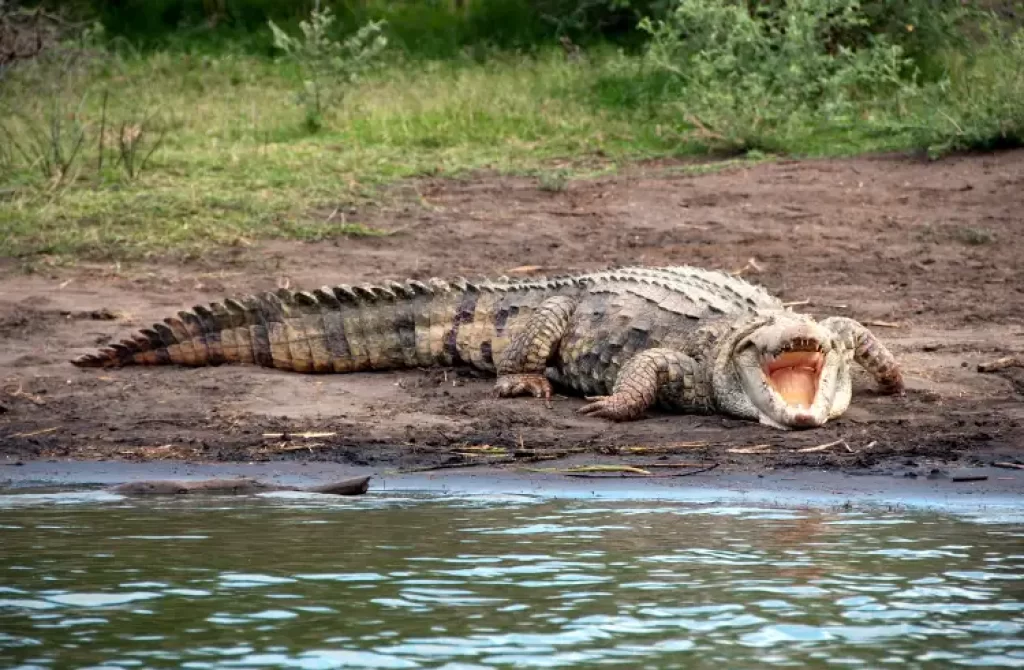
It’s a commonly held belief that crocodiles can live up to 150 years, but this is actually a bit of a myth. While crocodiles are certainly long-lived creatures, with lifespans that can exceed 50 years in some cases, there is no scientific evidence to support the claim that they can live up to 150 years.
In fact, determining the exact age of a crocodile can be quite difficult, as they don’t have growth rings in their bones like some other long-lived animals (such as trees).
Scientists generally estimate the age of a crocodile based on its size, reproductive status, and other factors.
That being said, some species of crocodiles have been known to live for many decades in captivity, and it’s possible that some wild individuals may live for similarly long periods of time. However, more research is needed to determine the true upper limit of crocodile lifespans.
Understanding the Lifespan of Crocodiles
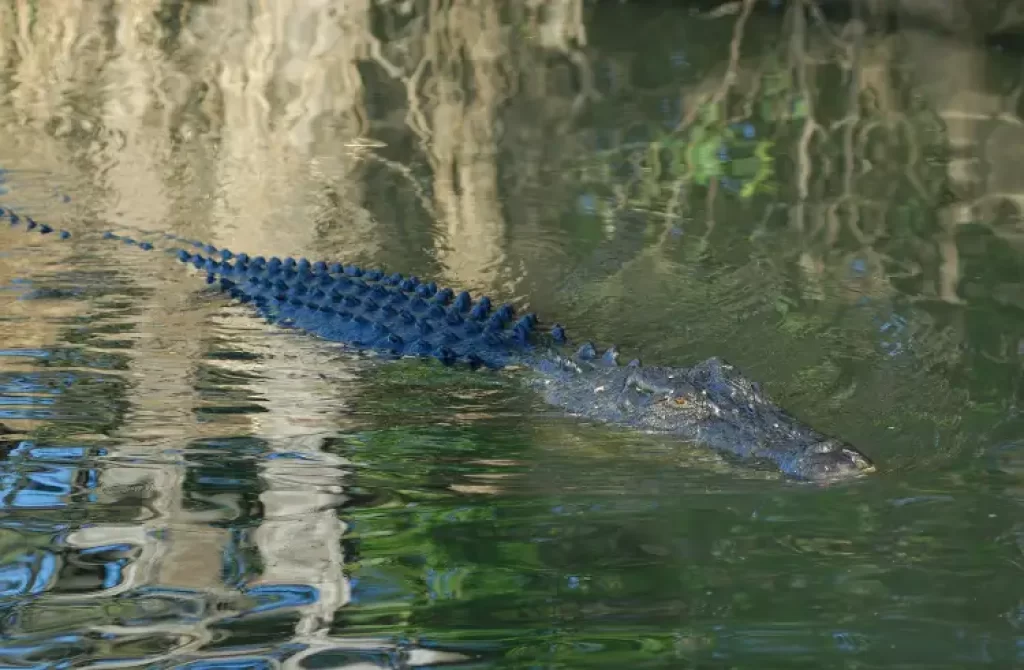
In conclusion, crocodiles are fascinating creatures that have been around for millions of years. The average lifespan of a crocodile varies depending on the species and environmental factors.
Some species can live up to 70 years or more in captivity, while others may only live up to 30-40 years in the wild.
Factors such as size, diet, habitat, and genetics all play a role in determining how long a crocodile will live.
For example, larger crocodiles tend to live longer than smaller ones because they have fewer predators and can hunt larger prey. Similarly, crocodiles that live in areas with abundant food sources and suitable habitats are more likely to survive and thrive.
It is also important to note that while crocodiles are apex predators, they still face threats from other animals and humans.
Humans have hunted crocodiles for their skin and meat for centuries, which has led to declines in some populations. Habitat loss due to human development also threatens many species of crocodiles.
Despite these challenges, there is still much we can learn about these ancient creatures. By studying their behavior, biology, and ecology, we can gain a better understanding of how they fit into their ecosystems and what we can do to protect them.
If you’re interested in learning more about crocodiles, be sure to check out our website for more articles and resources. We invite you to share our content with others who may also be interested in these fascinating creatures.

